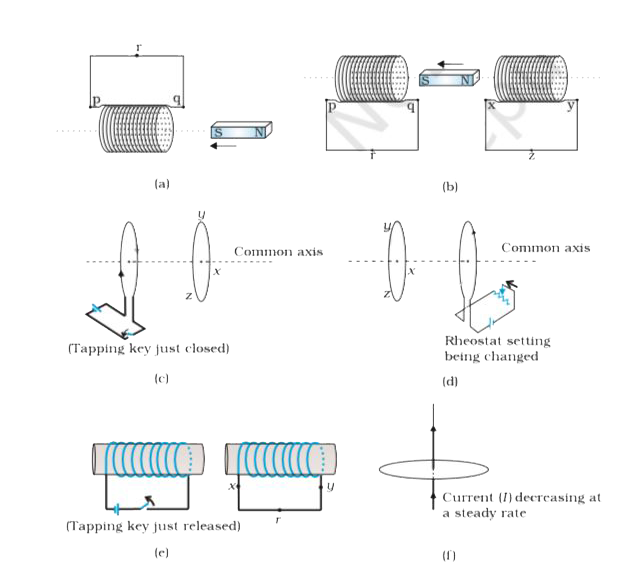Predict the direction of induced current in the situations described by the following figures.
 Solution in Punjabi
Solution in Punjabi
Step by step video & image solution for Predict the direction of induced current in the situations described by the following figures. by Physics experts to help you in doubts & scoring excellent marks in Class 12 exams.
Updated on:21/07/2023Topper's Solved these Questions
Similar Questions
For current entering at A, the electric field E(r at a distance r form A
View SolutionDefine atomic number.
View SolutionA charge q is placed at the centre of line joining two equal charges Q. Show that the system of three charges will be in equilibrium if q = -Q/4
View SolutionPredict the direction of induced current in the situation described by follow (a)
View SolutionPredict the direction of induced current in the situation described by follow (b)
View SolutionPredict the direction of induced current in the situation described by follow (c)

View SolutionPredict the direction of induced current in the situation described by follow (d)
View SolutionPredict the direction of induced current in the situation described by follow (e)

View SolutionPredict the direction of induced current in the situation described by follow (f)

View Solutionचित्र (a ) से (f ) में वर्णित स्थितियों के लिए (For situations described ) प्रेरित धारा की दिशा की प्रागुक्ति (predict ) कीजिये |

View SolutionPredict the direction of induced current in the situations described by the following figures (a) to (f).
View SolutionPredict the direction of induced current in the situations described by the following Figs. (a) to (f ).

View SolutionPredict the direction of induced current in the situations described by the following Figs. 6.18(a) to (f).

View SolutionPredict the direction of induced current in the situations described by the following figures (a) to (d).

View SolutionPredict the direction of induced current in the situations described by the following figures (a) to (d).
View SolutionPredict the direction of induced current in the situations described by the following Figs. 6.03(a) to (f).

View Solution
